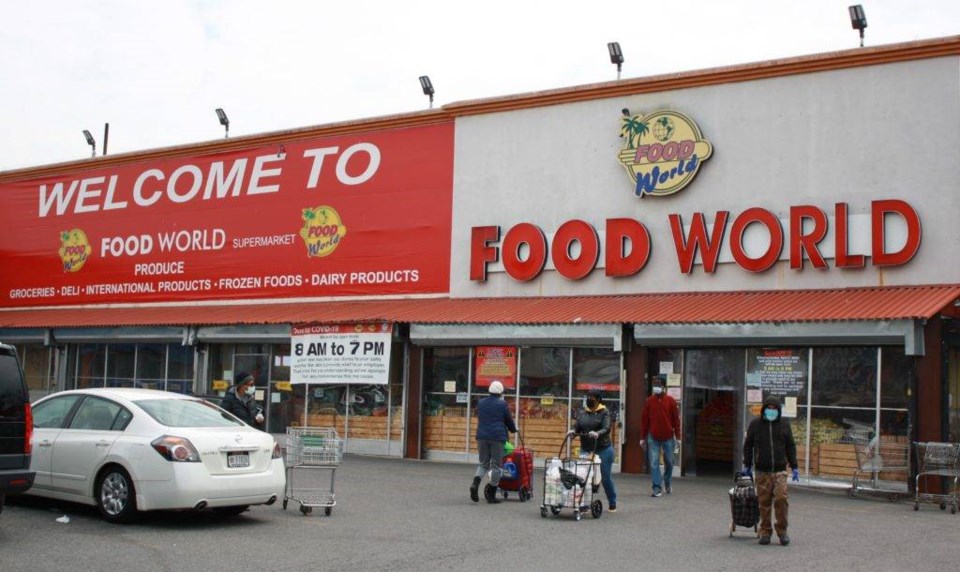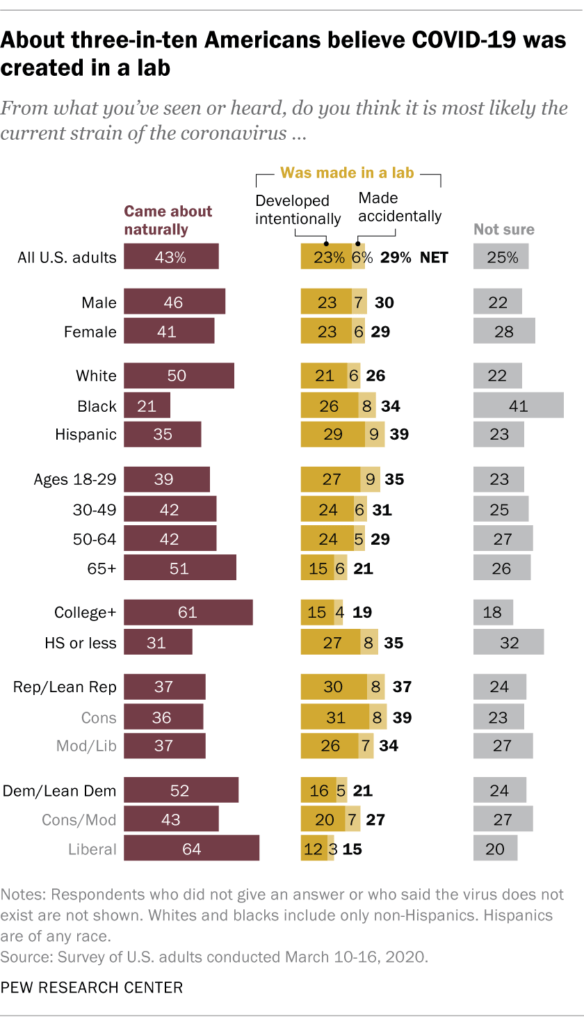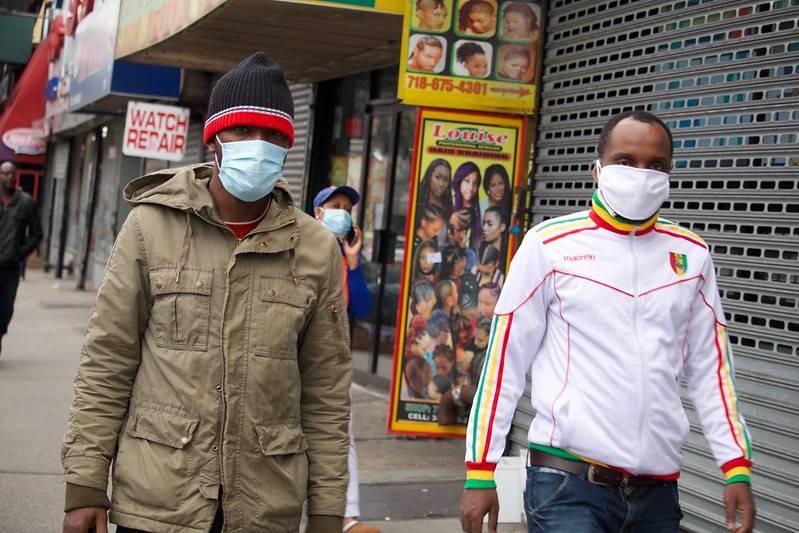"This is population control," commented one woman at the Food World Supermarket on Flatlands Avenue in East New York.
At the eerily quiet shopping center, residents wearing masks and gloves were careful to observe social distancing rules set in place by the city to help prevent the spread of COVID-19.
"They know exactly what they are doing," she continued but declined to identify herself, as she walked briskly and pushed shopping cart filled with groceries.
By April 22, New York City had 11,267 COVID-19 deaths, according to the official count. That same day, the national death toll from the virus exceeded 46,000.
A closer look at the data reveals that a disproportionate number of New York City victims are Black and Hispanic. That disparity holds nationwide, as well as overseas in England.
Given the disparities, many in the underserved and under-resourced communities can't help but feel like they might be targets in some evil plot.

"Obama said it was going to happen," said another woman, referring to reports that President Barack Obama's administration warned Trump in 2017 that a global pandemic could happen. "He was trying to prepare us for it."
Another shopper, Rodney Mitchell, pointed at China and Russia as a colluding source of the pandemic.
"Well, you know it started in the labs in China, and it got away from them... Russia is keeping that undercover. But Russia is a part of it," he said. " [Vladimir] Putin is on top of all of this; he's in control. Trump only does what Putin says."
Mitchell is not alone in his suspicions of an overseas cover up of the virus. Similar theories abound all over social media, validated in some large part by purported scientists and doctors. Even celebrities and other social influencers are standing firmly behind the idea that nothing is what the news media say it is.
For example, actors Woody Harrelson and John Cusack are among a number of Hollywood celebrities and internet influencers who have publicly backed and tweeted about a hugely popular theory that high-frequency waves from 5G internet technology in Wuhan, China is the cause of the coronavirus outbreak.
Lots of uncertainty about COVID-19's origin
According to a Pew Research Center survey released on April 8, nearly one in three Americans believe the novel coronavirus was bio-engineered in a laboratory.
Interestingly, the study also found that Blacks were twice as likely as Whites and Hispanics (41 percent, compared to 23 percent of Hispanics and 22 percent of Whites) to say they were not sure where the virus came from, suggesting that they have doubts about the explanations floated by scientists.

Most scientists believe there was a natural transmission of the virus from bats to humans, probably from meat markets in Wuhan, where the pandemic is believed to have started.
Still, some scientists have not ruled out the theory of accidental transmission from Wuhan labs, located near the marketplaces, that reportedly collected bat coronavirus.
Conspiracies and the Black community
"Conspiracy theories around COVID-19 are falling on fertile ground because there is a lot of misinformation circulating and a lot of unknowns about the virus," Brooklyn College Assistant Sociology Professor Donna-Lee Granville told BKReader.
The prevalence of racism is one reason these conspiracy theories might take root in Black communities, she explained, pointing to many (known and unknown) examples in the African-American experience:
"The consequences of historical incidents like the Tuskegee experiment are still on display in a contemporary healthcare system that is struggling to get to the heart of ongoing racial health disparities, like Black maternal mortality," Granville continued.
That history, however, does not create a collective Black mindset that tilts toward conspiracies. "Black people aren't a monolith," the professor explained, adding that Blacks have had to consider individually how race influences their experience.
Strong community response to the crisis
Communities of color, which were in crisis before the coronavirus stuck, have been hit particularly hard in terms of the death toll and the scramble for resources to survive the pandemic. Coronavirus has laid bare the glaring disparities in health and income measures.
Granville said many in Brooklyn's underserved Black communities are surviving through mutual aid programs and grassroots collectives - by their own collective efforts. "But we should not have to," she added.
In the long term, she is especially concerned about mental health issues and access to support tools to heal and grieve, as well as the financial ramifications of not being able to pay rent or mortgage and falling behind on bills.
"The future for Black communities may initially look bleak on the other side of this crisis, but the past has demonstrated that the sense of community and resilience that has ensured our survival will be called upon again to pull us out of this mess," she said.




